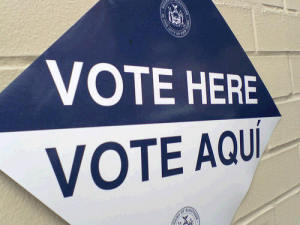Every 30 seconds, a Latino in the United States turns 18, and with millennials representing the largest and most diverse generation in the country, this demographic has become a critical but challenging voting bloc to motivate and mobilize. Since Election Day, the country has seen drama play out in social policy, including the ongoing battle over immigration reform and the now-infamous Michael Brown and Eric Garner cases. These events have perhaps stirred a once-dormant electorate, but not yet to the satisfaction of voting mobilizers and organizers.
Luis Torres, director of education policy for the League of United Latin American Citizens (LULAC), acknowledged the difficulties in reaching millennials. “[They] are more likely to be civically engaged, but less likely to show up at the polls for some reason,” he said. “Sometimes, these opinions are counterintuitive.”
Apart from the intangibles, there are concrete obstacles often standing in the way of increasing voter turnout for this valuable electorate. Some states maintain restrictive voting practices while others, like Arizona and Texas, impose voter identification laws. These hurdles, coupled with undesirable midterm candidates, have contributed to the plateauing trend of millennial voter turnout, where the turnout percentage has remained at around 12%.
Engaging Latino millennials might be made simpler as a result of momentum gathered by other headlines becoming the rallying cry for young minorities. To be sure, it “depends on how [we are] able to capitalize on this sentiment,” Torres said. “Are you going to engage people, are you going to educate them, are you going to invest the funds and get them registered?”
Looking forward, issues of health care, the economy and immigration will be paramount in rousing the potential of the Latino millennial bloc. It is ultimately the responsibility of all to ensure the voices of all are heard.


Recent Comments